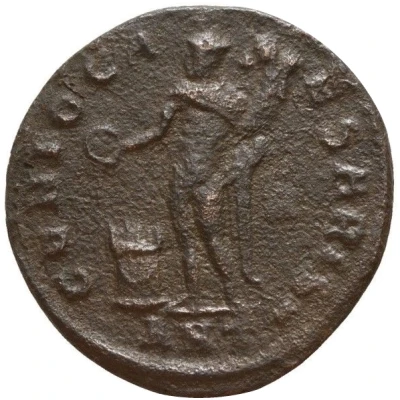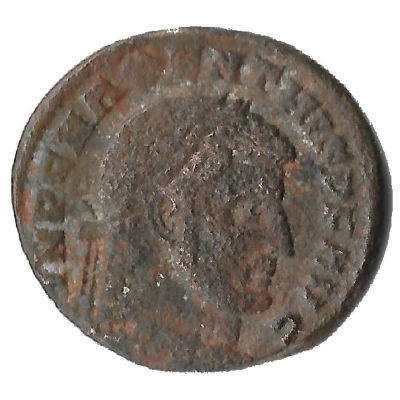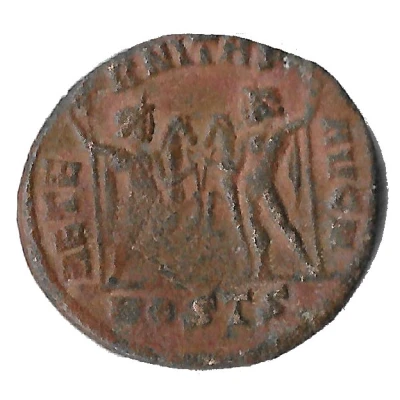


© ALAMIR
Follis - Maximinus II GENIO CAESARIS; Antioch
| Bronze | 7 g | 24 mm |
| Issuer | Rome › Roman Empire (27 BC - 395 AD) |
|---|---|
| Emperor | Maximinus II (311-313) |
| Type | Standard circulation coin |
| Years | 309-310 |
| Value | Nummus / Follis (¼) |
| Currency | Argenteus, Reform of Diocletian (AD 293/301 – 310/324) |
| Composition | Bronze |
| Weight | 7 g |
| Diameter | 24 mm |
| Shape | Round (irregular) |
| Technique | Hammered |
| Orientation | Variable alignment ↺ |
| Demonetized | Yes |
| Updated | 2024-10-05 |
| Numista | N#141249 |
|---|---|
| Rarity index | 88% |
Reverse
Genius, wearing modius, nude, chlamys draped over left shoulder, standing left, pouring liquid from patera in right hand and holding cornucopiae in left hand
Script: Latin
Lettering: GENIO CAESARIS*
Interesting fact
One interesting fact about the Follis coin featuring Maximinus II is that it was issued during a time of great economic and political turmoil in the Roman Empire. The coin's minting in Antioch, a city in modern-day Turkey, suggests that the empire was still maintaining some level of control over its distant provinces, despite the challenges it faced. Additionally, the coin's bronze composition and relatively low weight suggest that the empire was trying to conserve resources and maintain economic stability during a period of high inflation and currency devaluation.



